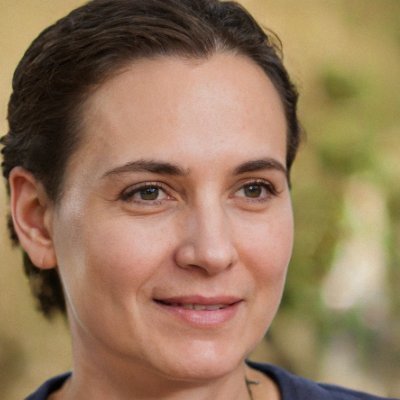Yearn.finance-koers
in USD

Over Yearn.finance
Disclaimer
OKX geeft geen beleggings- of vermogensadvies. Je moet zorgvuldig overwegen of het verhandelen of bezitten van digitale bezittingen voor jou geschikt is in het licht van je financiële toestand. Raadpleeg je juridische, fiscale of beleggingsadviseur als je vragen hebt over je specifieke situatie. Raadpleeg voor meer informatie onze Gebruiksvoorwaarden en Risicowaarschuwing. Door gebruik te maken van de website van derden ('TPW'), ga je ermee akkoord dat elk gebruik van de TPW onderworpen is aan en beheerst wordt door de voorwaarden van de TPW. Tenzij uitdrukkelijk schriftelijk vermeld, zijn OKX en haar partners ("OKX") op geen enkele manier verbonden met de eigenaar van de exploitant van de TPW. Je gaat ermee akkoord dat OKX niet verantwoordelijk of aansprakelijk is voor verlies, schade en andere gevolgen die voortvloeien uit jouw gebruik van de TPW. Houd er rekening mee dat het gebruik van een TPW kan leiden tot verlies of vermindering van je bezittingen. Het product is mogelijk niet in alle rechtsgebieden beschikbaar.
Prijsprestaties van Yearn.finance
Yearn.finance op sociale media


Handleidingen

Maak een gratis OKX-account aan.
Stort geld op je account.
Kies je crypto.
Yearn.finance Veelgestelde vragen
Yearn Finance is een DeFi-aggregator die is ontworpen om rendementen op opbrengst te stroomlijnen en te optimaliseren door automatisatie en een uitgebreide toolkit. Door samenwerkingen en samenwerkingen te faciliteren, streeft Yearn Finance ernaar om passief inkomen te demograveren, waardoor het zelfs beschikbaar is voor mensen met beperkte technische expertise.
Yearn Finance biedt verschillende voordelen voor DeFi-genodigden. Als aggregator stroomlijnt het de complexheid van het ophalen van opbrengsten, waardoor gebruikers hun opbrengsten maximaliseren door automatisch te navigeren en rendementsstrategieën te optimaliseren. Dit biedt gebruikers de mogelijkheid om hogere opbrengsten te verdienen in vergelijking met traditionele handmatige strategieën.
Eenvoudig YFI-tokens kopen op het OKX-cryptovalutaplatform. Beschikbare handelsparen in de spothandelstermine van OKX zijn onder meerYFI/USDT.
Je kunt ook YFI kopen met meer dan 99 lokale valuta door de "Snel kopen" optie. Andere populaire cryptotokens, zoalsBitcoin (BTC),Tether (USDT), enUSD Coin (USDC), zijn ook beschikbaar.
Je kunt ook je bestaande cryptovaluta swappen, waaronderXRP (XRP),Cardano (ADA),Solana (SOL), enChainlink (LINK), voor YFI zonder vergoedingen en zonder prijsverschuiving door gebruik te maken vanOKX Convert.
Bezoek de om de geschatte realtime conversieprijzen tussen lokale valuta's, zoals de USD, EUR, GBP en anderen, in YFI te bekijkenRekenmachine voor OKX cryptoconverteerder. De crypto-uitwisseling met hoge liquiditeit van OKX zorgt voor de beste prijzen voor je crypto-aankopen.
Duik dieper in Yearn.finance
Rok 2020 znamenal klíčový okamžik v trajektorii decentralizovaného financování (DeFi), který představil vlnu projektů usilujících o uznání a úspěch v této oblasti. Uprostřed této vlny se jako výrazný uchazeč objevil Yearn Finance, který se vyznačuje inovativním využitím automatizace k posílení výnosů z výnosového hospodaření. Projekt rychle upoutal pozornost trhu a během pouhých dvou měsíců od svého spuštění dosáhl impozantního objemu 1 miliardy USD celkové uzamčené hodnoty (TVL).
Co je Yearn Finance
Yearn Finance funguje jako dynamická agregační služba v rámci decentralizovaného financování (DeFi). Tato průkopnická platforma přináší revoluci ve snaze o optimalizované výnosy z hospodaření díky využití síly automatizace. Vedle svého závazku navazovat partnerství a strategické spolupráce usiluje Yearn Finance o demokratizaci generování pasivních příjmů v rámci ekosystému DeFi. Její inkluzivní přístup se vztahuje i na ty, kteří se v technických složitostech orientují hůře, a vytváří tak podmínky pro lepší dostupnost a účast v sektoru DeFi.
Tým Yearn Finance
Společnost Yearn Finance (dříve iEarn) založil Andre Cronje. Cronjeho rozsáhlé zkušenosti v kryptografickém sektoru, zejména v oblasti DeFi, ho vynesly na výsluní, přičemž jeho afilace sahají až do společností Fantom a CryptoBriefing.
Jak Yearn Finance funguje
Architektura protokolu se soustředí na tři základní komponenty: Earn, Zap a APY. Platforma Earn nabízí uživatelům přístup k optimálním úrokovým sazbám půjček prostřednictvím vyhledávání napříč protokoly. Inovativní funkce Zap zefektivňuje proces a umožňuje uživatelům provést více transakcí jediným kliknutím. Mezitím produkt APY (roční procentní výnos) maximalizuje možnosti půjčování napříč různými protokoly a zajišťuje, že uživatelé využívají nejlepší služby na trhu.
Nativní token společnosti Yearn Finance: YFI
Jádro ekosystému společnosti Yearn Finance tvoří její nativní kryptoměna YFI, která debutovala v polovině července 2020 uprostřed explozivního vzestupu DeFi. Její nabídka byla původně omezena na 30 000 tokenů YFI. V reakci na konsensus komunity bylo následně vyraženo dalších 6 666 tokenů YFI.
Případy použití YFI
YFI slouží jako mnohostranný token v rámci ekosystému Yearn Finance. Primárně motivuje poskytovatele likvidity. Kromě toho YFI funguje jako řídicí token, který držitelům uděluje právo podílet se na rozhodovacích procesech souvisejících s projektem. Kromě toho je YFI obchodovatelný, což uživatelům umožňuje zapojit se do obchodování s kryptoměnami a využívat jej jako úložiště hodnoty.
Distribuce YFI
Token YFI je distribuován následujícím způsobem:
- 27,3 %: fond likvidity yCRV
- 54,6 %: Balancer likvidity pools
- 18,1 %: To představuje 6 666 tokenů, které byly vyraženy po spuštění. Jedna třetina z nich byla přidělena klíčovým přispěvatelům do protokolu a zbylé dvě třetiny do pokladny provozované správou platformy.
ESG-vermelding






